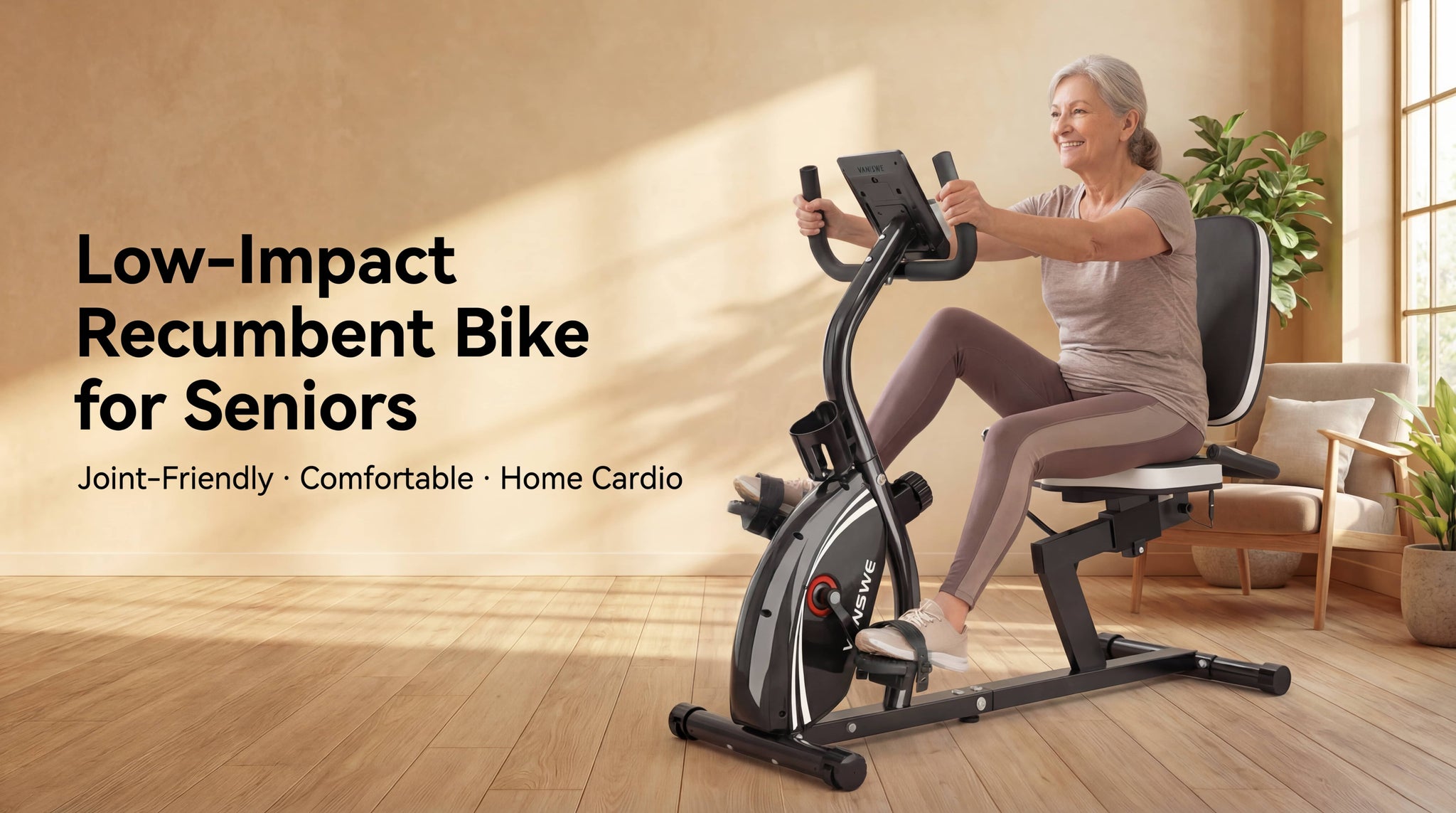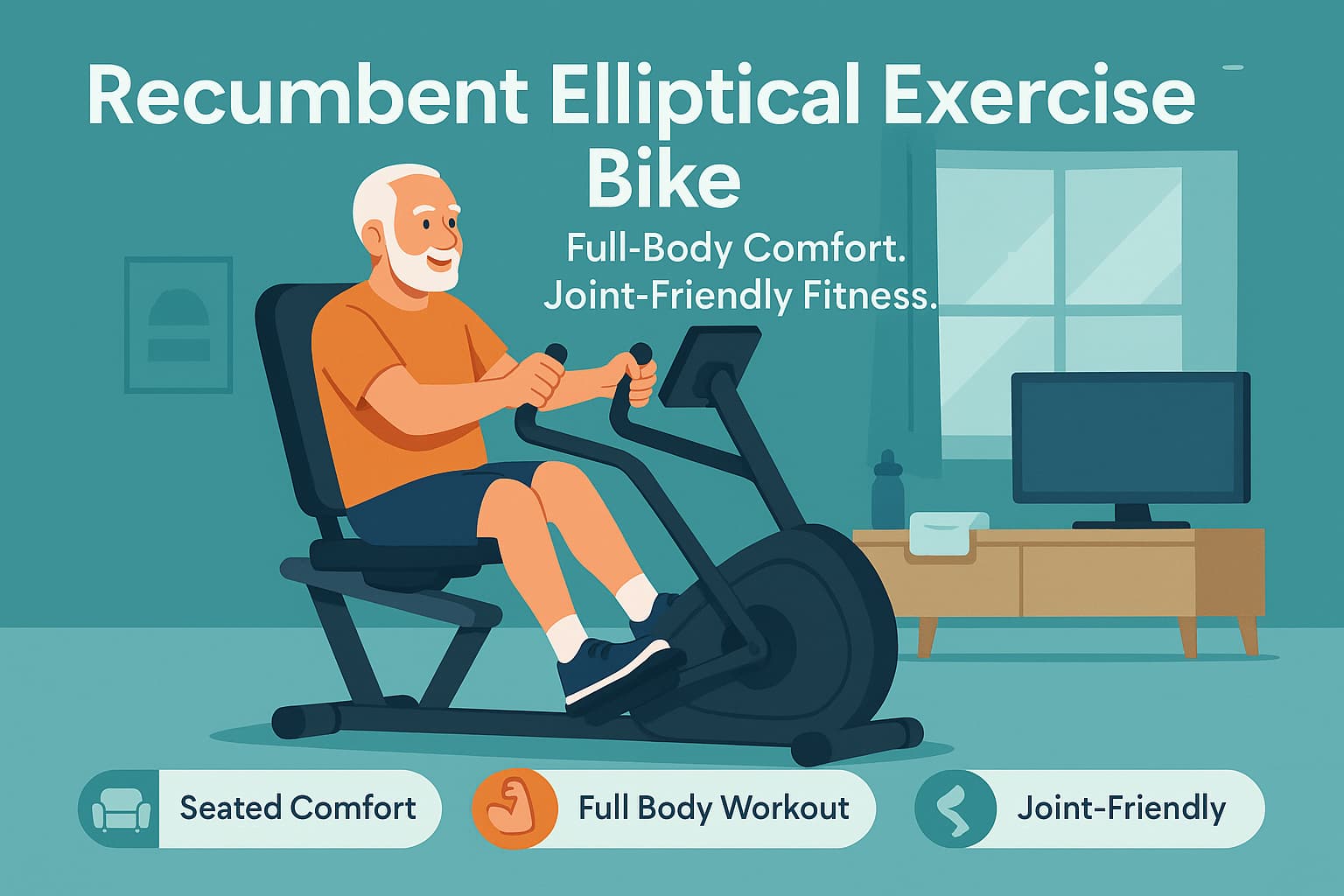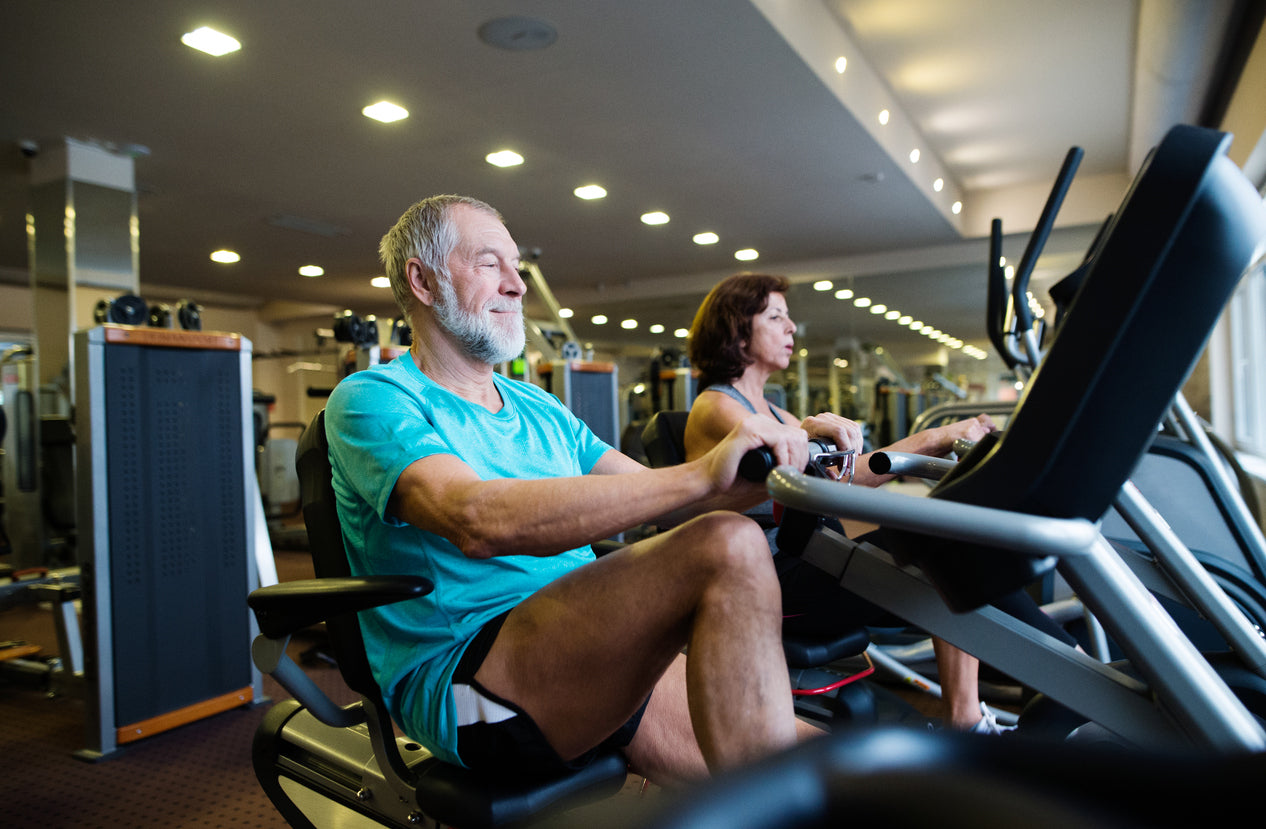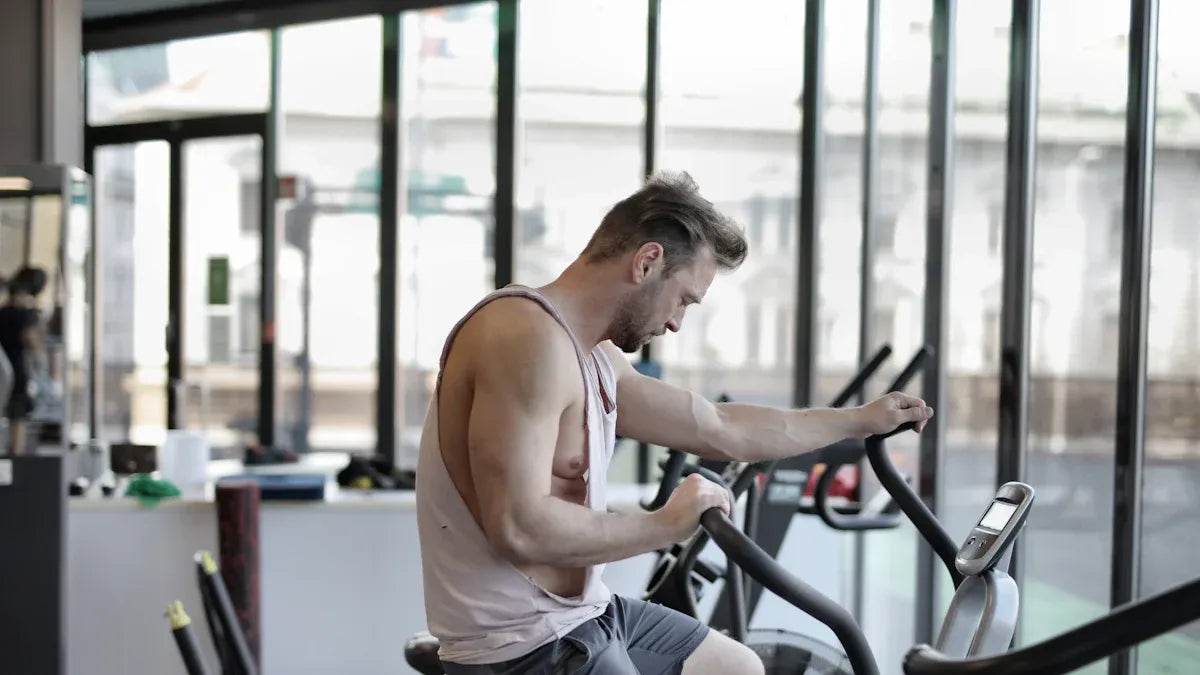A recumbent bike is a good exercise after knee replacement – it’s a clinically aligned rehabilitation tool that supports knee joint recovery through controlled, load-free motion. Features such as seat positioning, backrest angle, and pedal distance can be adjusted for comfort and rehabilitation. Compared to other bikes, recumbent bikes offer a compact design that fits well in limited spaces. A recumbent bike is also a great addition to a home gym for both rehabilitation and regular workouts.
For patients recovering from knee surgery, such as total knee arthroplasty (TKA) or other injuries, maintaining joint mobility while avoiding excessive compressive or shear forces is crucial. Recumbent bikes, as well as other exercise bikes and stationary bicycles, provide precisely this balance. Exercise bikes—especially recumbent models—are designed for comfort, ergonomic support, and joint health, making them ideal for individuals with sensitive knees or limited mobility. Riding the bike during tkr rehabilitation helps perform essential exercises that promote bending (knee flexion) and gradually restore the ability to fully pedal. The first couple of weeks after surgery are critical for starting gentle activity; patients should start riding as soon as cleared by their healthcare provider. This process helps build leg strength and targets the muscles in the legs, supporting overall recovery and mobility.
Introduction to Knee Rehabilitation
Knee rehabilitation is a vital step for anyone recovering from knee replacement surgery or dealing with knee problems such as injuries or chronic knee pain. After a knee replacement, the goal is to restore the knee joint’s range of motion, rebuild leg muscles, and reduce pain, all while protecting the operated knee from unnecessary stress. A recumbent bike is an excellent tool for knee rehab because it allows total knee replacement patients to exercise in a controlled, low-impact environment. By gently moving the knee through its range of motion, the recumbent bike helps maintain flexibility and encourages healing without putting excessive pressure on the joint. Whether you’re recovering from surgery or managing ongoing knee issues, incorporating a recumbent bike into your rehabilitation routine can support your recovery, improve muscle strength, and help you return to daily activities with greater comfort and confidence.
Unique Rehabilitation Advantages
Unlike upright bikes or walking, the recumbent bike places the hip and knee in a semi-extended position, reducing the angular stress on the joint. This ergonomic alignment allows early-stage rehabilitation patients to:
- Perform closed-chain, non-weight-bearing movements, promoting joint nutrition via synovial fluid circulation
- Re-establish neuromuscular coordination of the quadriceps and hamstrings without overloading the prosthesis
- Train in a symmetrical and repeatable motion path, minimizing risk of compensatory movement patterns
- Manage pain while progressively enhancing proprioception and vascular perfusion
These characteristics are especially beneficial during the critical early phase of recovery (Weeks 3–6) when joint sensitivity is high and scar tissue formation can limit mobility.
🛒 Looking for a Recumbent Bike?
Suggested Use Timeline for TKA Patients
This recovery timeline is based on clinical guidelines from the American Physical Therapy Association (APTA) and supported by peer-reviewed research from Bade and Stevens-Lapsley (2011) [1], who demonstrated that early and progressive rehabilitation—including recumbent cycling—leads to better functional outcomes following total knee arthroplasty (TKA).
| Post-Op Phase | Training Objective | Recumbent Bike Strategy |
|---|---|---|
| Week 1–2 | Passive ROM (if cleared) | Pedal-assisted motion only (no resistance) |
| Week 3–5 | Active ROM + light endurance | 5–10 mins, no resistance, focus on smooth cadence |
| Week 6–10 | Strength reactivation + volume build-up | Gradually increase time & light resistance |
| Week 10+ | Functional reintegration | Combine with gait drills and resistance training |
🩺 Clinical Note: Avoid high resistance settings until at least 8–10 weeks post-op, and always ensure knee flexion angle remains below discomfort threshold (~90–110° in early weeks).
Progressing on the Bike
As you advance in your knee rehabilitation journey, it’s important to gradually increase the challenge on your stationary bike to continue building strength and flexibility. Start slowly, using light resistance and ensuring the seat position is set so your knee maintains a slight bend at the lowest point of the pedal stroke. This helps prevent knee discomfort and allows for a smooth, full revolution of the pedals. Physical therapists often recommend adjusting the seat slides to find a comfortable position that supports your range of motion and joint stability. As your knee feels stronger and more stable, you can incrementally raise the resistance levels to further engage your leg muscles. Remember, the key is to progress at your own pace, listening to your body and making adjustments as needed. By following these steps, you’ll enhance your knee joint’s mobility, strengthen your muscles, and support a safe and effective recovery.
Overcoming Common Challenges
During knee rehabilitation, it’s normal to encounter some challenges, such as knee pain or discomfort while exercising. The most important thing is to listen to your body and avoid pushing through pain. If you notice any discomfort, pause your workout and consult your doctor or physical therapist for advice on modifying your routine. Choosing a recumbent bike with a comfortable seat and a sturdy frame can make a big difference, as it reduces strain on your knee joint and helps you maintain proper form. Adjusting the seat and position to suit your needs can also help minimize stress on the knee and make your workouts more enjoyable. By addressing these common challenges and staying consistent with your rehabilitation program, you’ll be better equipped to achieve full recovery and regain strength in your leg muscles.
Long-Term Benefits of Recumbent Bike Use
Using a physical therapy recumbent bike as part of your knee rehabilitation offers lasting benefits that go beyond the initial recovery period. Regular cycling on a recumbent bike helps improve your knee joint’s range of motion and strengthens the leg muscles that support and stabilize the knee. This not only aids in your current recovery but also helps prevent future knee problems and injuries. Because recumbent bikes are low-impact, they’re ideal for individuals with knee pain or a history of knee injuries, allowing you to exercise safely without putting unnecessary stress on your joints. Maintaining a routine with a recumbent bike can also help you manage your weight, boost your overall fitness, and support long-term joint stability. With the convenience of exercising at home, you can easily make recumbent biking a regular part of your healthy lifestyle.
Tips for a Successful Rehabilitation
To get the most out of your knee rehabilitation, keep these tips in mind:
- Start slowly and gradually increase the intensity of your workouts as your knee discomfort lessens.
- Adjust the seat position and resistance levels on your exercise bike to ensure a comfortable ride and allow for a full revolution of the pedals.
- Maintain a comfortable position on the bike, keeping your body weight evenly distributed and your knee joint slightly bent during each pedal stroke.
- Listen to your body—if you experience pain or discomfort, stop exercising and consult your doctor or physical therapist.
- Stay consistent with your workouts, but always prioritize safety and proper form over speed or resistance.
By following these guidelines and working closely with your healthcare team, you can achieve full recovery, rebuild strength in your leg muscles, and enjoy an active lifestyle after knee replacement surgery or knee injuries. Remember, every recovery is unique, so personalized advice from your doctor or physical therapist is essential for creating a rehabilitation plan that fits your needs and goals.
Consult Your Physician or Physical Therapist
While recumbent biking can be a safe and effective tool for post-TKA rehabilitation, every recovery journey is unique. Before starting or progressing your cycling routine, consult with your orthopedic surgeon or physical therapist to ensure it aligns with your specific condition, surgical outcome, and mobility goals. Personalized guidance will help you maximize benefits while avoiding setbacks.
- Bade, M. J., & Stevens-Lapsley, J. E. (2011). Early high-intensity rehabilitation following total knee arthroplasty improves outcomes. Journal of Orthopaedic & Sports Physical Therapy, 41(12), 932–941.
Latest Articles











